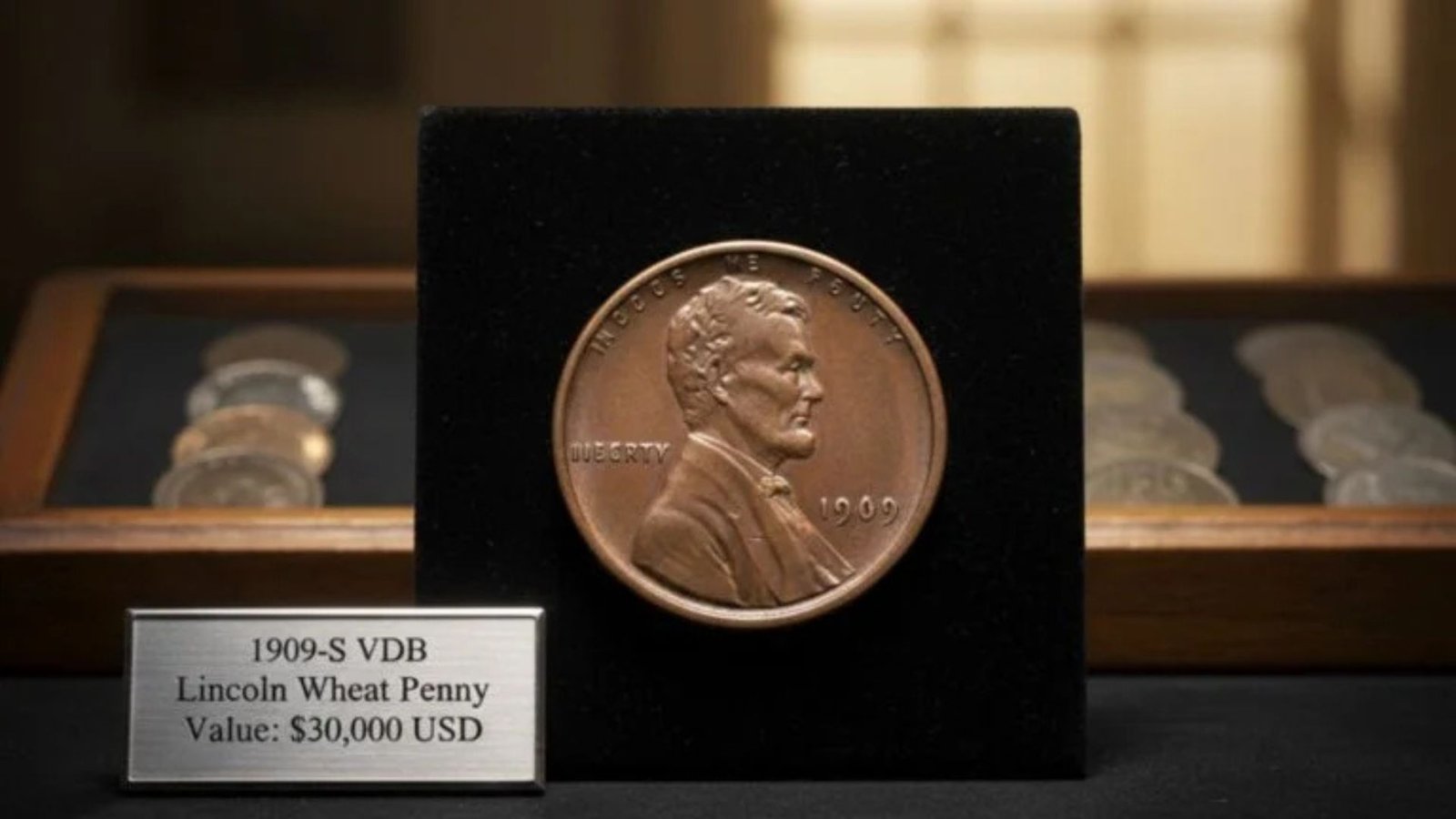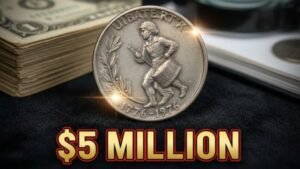Have you ever checked your pocket change for hidden treasure? One rare Lincoln Wheat Penny could be worth up to $30,000 – and it’s still floating around in everyday circulation! Collectors are buzzing about this tiny copper coin that looks ordinary but hides massive value. In this guide, we’ll break down everything in simple words: what makes it special, how to spot it, and why it’s a game-changer for coin hunters.
What Is the Lincoln Wheat Penny?
The Lincoln Wheat Penny is a classic U.S. cent minted from 1909 to 1958. It shows President Abraham Lincoln on the front (obverse) and two wheat stalks on the back (reverse) – that’s where the “wheat” name comes from. Unlike modern pennies with the Lincoln Memorial, these old ones have a vintage charm.
Over 10 billion were made, so many still turn up in jars, rolls, or even cash registers. But a few rare versions stand out like diamonds in the rough.
Why Some Are Worth Thousands
Most wheat pennies are worth just 2–10 cents. Value jumps when errors or special mint marks appear. The holy grail? Coins from certain years with tiny mistakes made during production.
The $30,000 Lincoln Wheat Penny: Key Details
The star of the show is the 1943 Bronze Lincoln Wheat Penny. In 1943, the U.S. switched to steel pennies to save copper for World War II. A handful of bronze planchets (blank coins) accidentally got struck with the wheat design. Only about 20 are known to exist!
| Feature | Normal 1943 Penny | Rare $30K Version |
|---|---|---|
| Material | Steel (zinc-coated) | Bronze (copper alloy) |
| Weight | 2.7 grams | 3.11 grams |
| Magnet Test | Sticks to magnet | Does NOT stick |
| Value (Good Condition) | 10–50 cents | $10,000–$30,000+ |
| Rarity | Billions made | ~20 known |
Pro Tip: Weigh your 1943 penny on a digital scale or test with a magnet. If it fails both, get it appraised fast!
Other High-Value Wheat Pennies in Circulation
Not just 1943 – these gems hide in change too:
- 1909-S VDB: First year with designer initials. Worth $700–$2,000 in average condition.
- 1914-D: Only 1.2 million minted. Good ones fetch $200–$1,500.
- 1922 No D (Plain): Mint mark missing due to die error. $500–$20,000.
- 1955 Double Die: Letters look doubled. $1,000–$2,000.
How to Hunt for Your $30K Lincoln Wheat Penny
No fancy tools needed – start today!
Step 1: Check Date and Mint Mark
- Flip the penny: Look under the date for a tiny letter.
- S = San Francisco (often rare).
- D = Denver.
- No letter = Philadelphia.
Step 2: Inspect for Errors
- Double Die: Words or date appear blurry/doubled.
- Repunched Mint Mark: Letter looks smudged or overlapped.
- Use a 10x magnifying glass (cheap on Amazon).
Step 3: Source Your Coins
| Method | Cost | Success Tip |
|---|---|---|
| Bank Rolls | Free–$0.50 | Ask for “customer wrapped” pennies. |
| Coin Shops | $1–$5 per roll | Build rapport for deals. |
| Garage Sales | Pennies on the dollar | Buy jars of old change. |
| Metal Detecting | Detector $100+ | Hunt old parks/schools. |
Step 4: Verify and Sell
- Clean gently (never scrub – lowers value).
- Compare to PCGS or NGC guides online.
- Submit to grading services (costs $20–$50).
- Sell via eBay, Heritage Auctions, or local dealers.
Real Stories: Everyday People Strike Gold
- Ohio Teacher (2022): Found a 1943 bronze in dad’s old jar. Sold for $28,500 at auction.
- Texas Kid (2024): Got a 1955 double die in school lunch change. Graded MS65, worth $1,800.
- Retired Couple: Sorted 10,000 pennies over lockdown – netted $3,200 from errors.
These aren’t myths. The U.S. Mint estimates millions of rare wheats still circulate!
Why the Lincoln Wheat Penny Hunt Beats Lottery Tickets
| Factor | Lottery | Wheat Penny Hunt |
|---|---|---|
| Cost | $2 per ticket | Free (your change) |
| Odds | 1 in 300 million | 1 in 10,000 rolls |
| Skill | Pure luck | Learnable |
| Fun | 5 minutes | Hours of thrill |
Plus, you own a piece of history. The Lincoln Wheat Penny celebrates 100+ years of American stories.
Start Your $30K Treasure Hunt Now
Grab that jar under the couch. Sort by date. Test every 1943. You don’t need to be an expert – just curious. One Lincoln Wheat Penny could pay off a car, vacation, or college fund.




